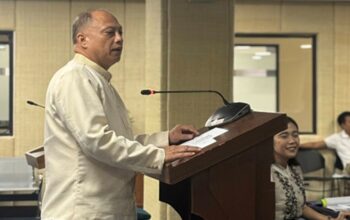TAGBILARAN CITY, Bohol (PIA) — The Bureau of Soils and Water Management (BSWM) has set aside P5 million for cloud seeding operations to expedite land preparation for the next cropping season.
“This is on top of the P5 million committed by the department in 2023,” said Engr. Cecile Opada of the Department of Agriculture Provincial Agriculture Technology Coordination office.
During the recent El Niño Task Force meeting, Opada presented DA’s recommendation for proactive cloud seeding operations to protect Bohol’s drought-vulnerable areas that are beyond the reach of irrigation, as well as the still sizable patches of rain-fed paddies.
In 2023, Bohol allocated P2.5 million from its provincial disaster funds to supplement the P5 million funds that the BSWM also put up upon the request of the provincial government.
For 2024, the Provincial Disaster Risk Reduction and Management Office has set aside P2.5 million for the rental of a civilian aircraft for the conduct of cloud seeding operations.
The BSWM, through the General Appropriation Act 2024, committed additional funds for the provincial government’s conduct of cloud seeding operations in the amount of P5 million.
In the same meeting, Opada also presented the cost derivation of the planned cloud seeding operations for 45 hours using a civilian aircraft in Central Visayas.
Cloud seeding operations will involve the use of an aircraft to be manned by two pilots, cloud seeding personnel, and salt loaders carrying a minimum of 20 bags of salt.
In January, the BSWM conducted pre-cloud seeding assessment and validation in the province by checking the status of the waters at Bohol’s major dams, namely: Bayongan, Zamora, Malinao, and Capayas.
The joint area assessment for pre cloud seeding operations showed that in preparation for the wet cropping season in 2024, the storage capacities of the four dams need to be replenished through rainfall so that Bohol could hit its 9,370.95 hectares targeted for production.
DA estimated that the cloud seeding operations will run a total of 45 hours and would require 45 days of operations in cloud formation seeking missions, pegged at around P5,017,280.
According to PAGASA, cloud seeding is done to produce more rain and to let the cloud rain earlier and more easily than a natural cloud.
It involves putting into the cloud some particles, such as salt, upon which the vapor will condense into cloud/water droplets. (RAHC/PIA7 Bohol)



